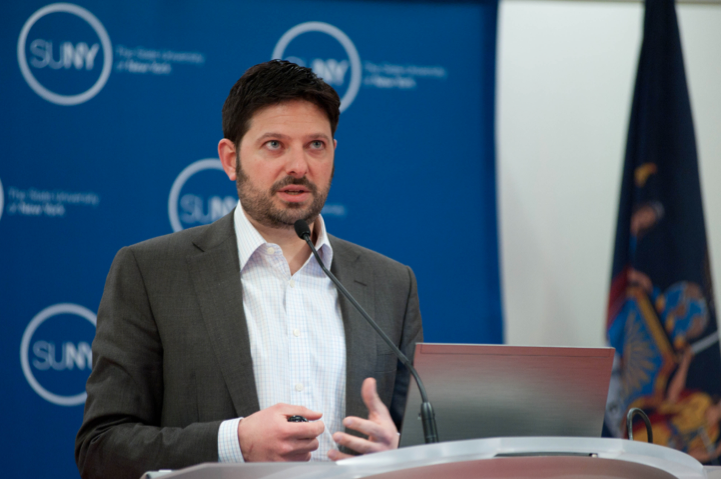Maryland state now has an open data portal similar to the OpenBaltimore data portal that has been around since spring 2011.
Data.Maryland.gov launched officially on May 8, and the database, as of May 12, contained 237 datasets. The data website is Socrata-based — look for the icon in the top, left-hand corner — meaning the state’s public datasets are housed via the Socrata Open Data Platform. (Socrata is a Seattle-based cloud company that is working to standardize government data releases.)
Beth Blauer, former director of the Maryland Executive Department‘s StateStat office, said it was Bryan Sivak, Maryland’s first CIO, who was “largely the one who was responsible for selecting Socrata and pioneering its use in the state.”
Sivak discussed some of this interest last September at gb.tc‘s Groundwork hackathon during Baltimore Innovation Week.
(Blauer, though, wasn’t part of the Data.Maryland.gov implementation: she took a job with Socrata in fall 2012 as director of GovStat, and was “barred from working on the open data release” once she started interviewing with Socrata.)
Gov. Martin O’Malley announced the new data portal at an event co-hosted by the Future of Information Alliance, of which the state is a member, and heralded it as “a movement away from ideological, hierarchical, bureaucratic governing and toward information-age governing that is fundamentally entrepreneurial, collaborative, relentlessly interactive and performance driven.”
Of course, O’Malley has regularly promoted his governing style as data- and “performance-driven” since his days as mayor of Baltimore, when he implemented CitiStat.
The same thinking led O’Malley to bring StateStat into being after he was elected Maryland’s governor in 2006. It’s used to oversee roughly 80 percent of the state’s budget. In an interview in 2010, Blauer, said that Maryland was “the only state right now that’s extensively using needs data” to justify decisions regarding state spending.
A new report from the State Integrity Investigation, however, suggests that Maryland’s open data and spending transparency sites are little more than “window dressing,” in the words of Greg Smith of nonprofit “good-government” group Community Research. The State Integrity Investigation’s “Corruption Risk Report Card” even ranked Maryland 46th in access to information, as Technically Baltimore reported.
Although, that report was published prior to the unveiling of Data.Maryland.gov. The new data website is a small step, admittedly, but perhaps one that will chip away at jaded indifference toward the relative openness of state government while encouraging more work by civic hackers to dig into accessible data and make it more intelligible for a voting public that might not have the time.
It appears this is O’Malley’s hope, as he said in his commencement remarks at St. Mary’s College over the weekend:
Your parents grew up in a time when leadership was ideological, hierarchical and bureaucratic. This new Information Age calls for a different way:
- It calls for leadership that is entrepreneurial.
- Leadership that is collaborative.
- Leadership that is accountable, performance measured and relentlessly interactive.
- Leadership that creates common platforms to connect and empower individuals.
- Leadership which is willing to open-source information in order to unlock individual community-based solutions — on a massive scale.
Before you go...
Please consider supporting Technical.ly to keep our independent journalism strong. Unlike most business-focused media outlets, we don’t have a paywall. Instead, we count on your personal and organizational support.
Join our growing Slack community
Join 5,000 tech professionals and entrepreneurs in our community Slack today!





